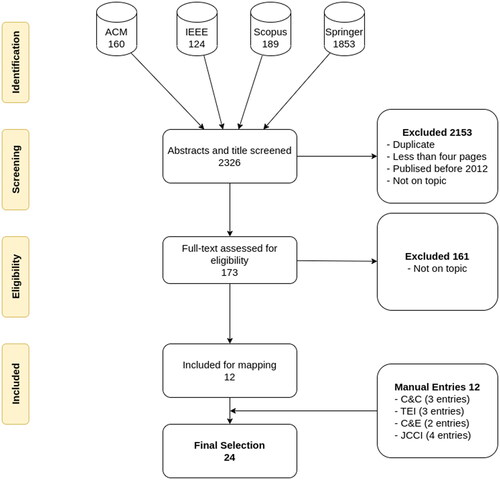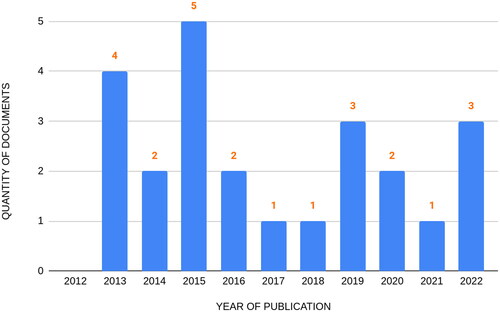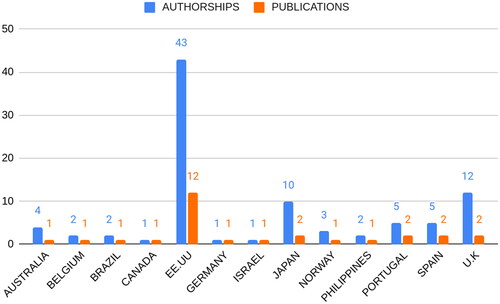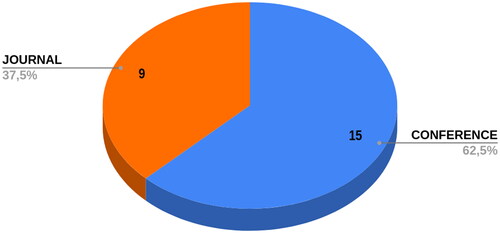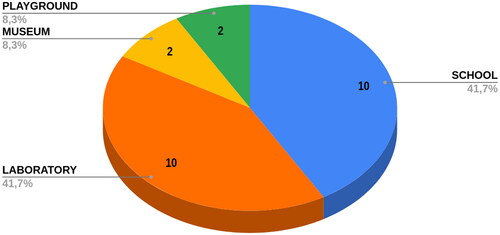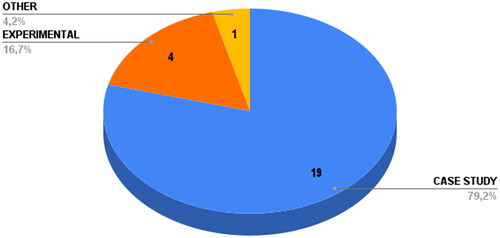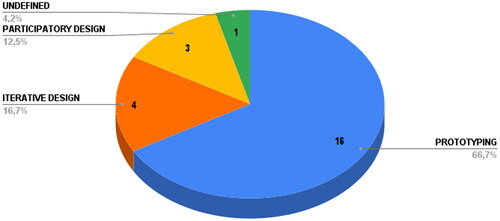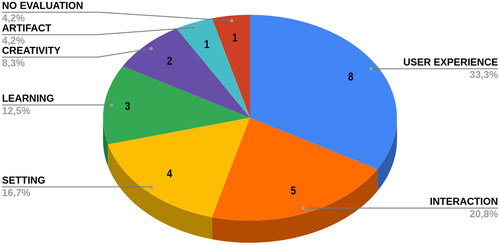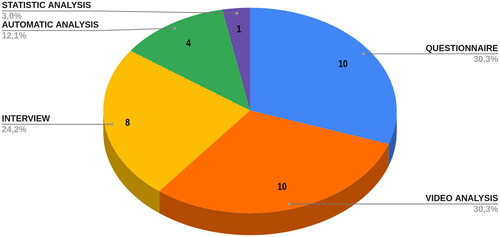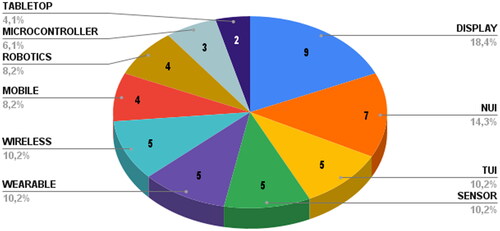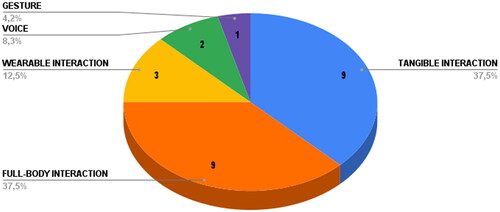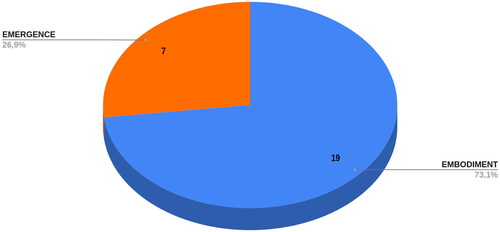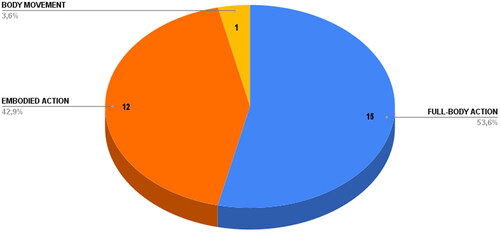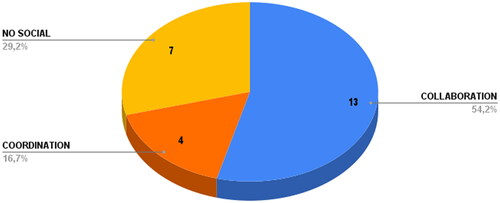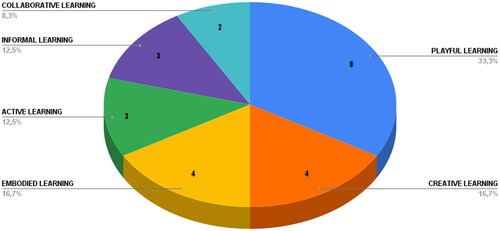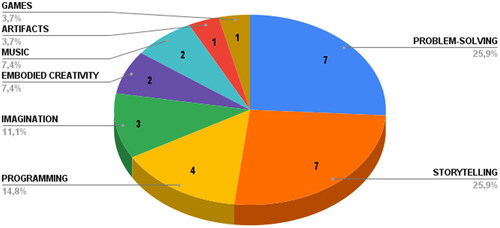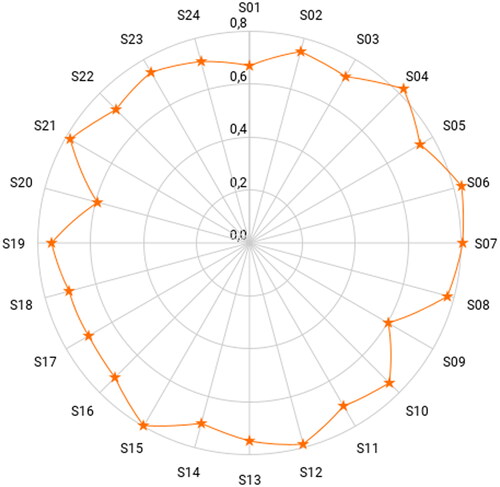Figures & data
Table 1. Inclusion criteria.
Table 2. Exclusion criteria.
Table 3. General questions.
Table 4. Technology: What type of technology is used in the studies?
Table 5. Interaction: How does the interaction with computational technology take place?
Table 6. Enactive: How is embodied cognition considered and involved in the interaction?
Table 7. Embodiment: How is the human body involved in the interaction?
Table 8. Social: How is the social interaction present in the study?
Table 9. Learning: What kind of learning is explored in the study?
Table 10. Creativity: How is creativity explored in the study?
Table 11. Journals and conferences where the selected documents were published.
Table 12. Technology used by environments in the reviewed studies.
Table 13. Type of activities supported by environments in the SLR results.
Figure 19. Relationship diagram between technology, enactive characteristic, creative activity and creative dimension.


